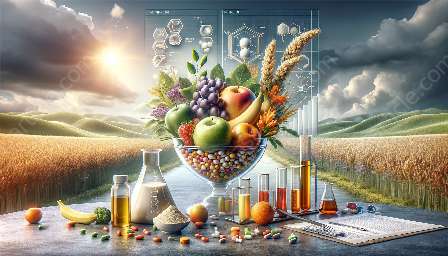High blood pressure, also known as hypertension, can be managed and sometimes prevented through dietary changes. In this article, we'll explore the relationship between high blood pressure diet and therapeutic diets, as well as the scientific principles that guide these recommendations.
Understanding High Blood Pressure
High blood pressure is a common condition that can lead to serious health complications if left unmanaged. It occurs when the force of blood against the artery walls is consistently too high, putting strain on the heart and blood vessels. In addition to lifestyle modifications and medications, diet plays a crucial role in managing high blood pressure.
Therapeutic Diets and Nutrition Science
Therapeutic diets are designed to address specific health conditions or diseases, including high blood pressure. Nutrition science provides the foundation for understanding the interactions between food, nutrients, and physiological processes in the body. By applying scientific principles to dietary recommendations, individuals with high blood pressure can make informed choices to support their overall health.
The High Blood Pressure Diet
A high blood pressure diet focuses on reducing sodium intake, increasing potassium consumption, and emphasizing whole foods that are rich in nutrients that support heart health. Additionally, the DASH (Dietary Approaches to Stop Hypertension) diet is widely recommended for individuals with high blood pressure. It emphasizes fruits, vegetables, whole grains, lean proteins, and low-fat dairy products, while limiting saturated and trans fats, cholesterol, and added sugars.
Nutrient Guidelines for High Blood Pressure
When it comes to managing high blood pressure, the following nutrients play significant roles:
- Sodium: Excessive sodium intake can contribute to fluid retention and increased blood pressure. It's recommended to limit sodium to 2,300 mg per day, or even lower for some individuals.
- Potassium: This mineral helps regulate blood pressure and counteracts the effects of sodium. Fruits, vegetables, and legumes are excellent sources of potassium.
- Magnesium: Found in nuts, seeds, whole grains, and leafy greens, magnesium supports blood vessel function and blood pressure regulation.
- Calcium: Dairy products, leafy greens, and fortified foods provide essential calcium, which influences blood pressure and overall cardiovascular health.
- Omega-3 Fatty Acids: These healthy fats, found in fatty fish, flaxseeds, and walnuts, have been linked to lower blood pressure and improved heart health.
Choosing Heart-Healthy Foods
When planning a high blood pressure diet, individuals should focus on the following types of foods:
- Fruits and Vegetables: Aim for a variety of colorful produce to obtain a wide range of vitamins, minerals, and antioxidants.
- Whole Grains: Opt for whole grain bread, pasta, rice, and cereals to increase fiber intake and promote heart health.
- Lean Proteins: Include sources such as poultry, fish, beans, and legumes to reduce saturated fat and cholesterol consumption.
- Dairy Products: Choose low-fat or fat-free options to obtain calcium and other essential nutrients without excessive saturated fat.
- Healthy Fats: Incorporate sources of unsaturated fats, such as olive oil, avocados, and nuts, for heart-healthy benefits.
- Herbs and Spices: Use herbs and spices to enhance flavor without relying on salt for seasoning.
Meal Planning and Preparation
Developing a meal plan that aligns with a high blood pressure diet can help individuals stay on track and make healthy choices throughout the week. Key strategies for successful meal planning include:
- Batch Cooking: Prepare large batches of soups, stews, or grain dishes that can be portioned out for multiple meals.
- Prepping Ingredients: Wash, chop, and portion fruits, vegetables, and lean proteins in advance to streamline meal preparation.
- Creating Balanced Meals: Aim to incorporate a variety of nutrients into each meal, including lean protein, whole grains, and plenty of vegetables.
- Snack Planning: Keep healthy snacks readily available to prevent reaching for less nutritious options when hunger strikes.
Monitoring and Adaptation
Regular blood pressure monitoring is essential for individuals following a high blood pressure diet. By tracking blood pressure readings, individuals can assess the effectiveness of their dietary changes and make adjustments as needed. Additionally, consulting with a healthcare professional or registered dietitian can provide personalized guidance and support for managing high blood pressure through diet and lifestyle modifications.
Conclusion
The high blood pressure diet is an integral component of managing hypertension and promoting overall heart health. By understanding the principles of therapeutic diets and nutrition science, individuals with high blood pressure can make informed choices to support their well-being. Through a focus on nutrient-rich foods, mindful meal planning, and regular monitoring, it's possible to effectively manage high blood pressure and reduce the risk of associated health complications.

